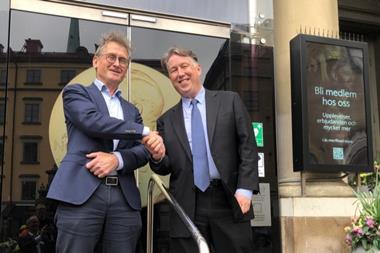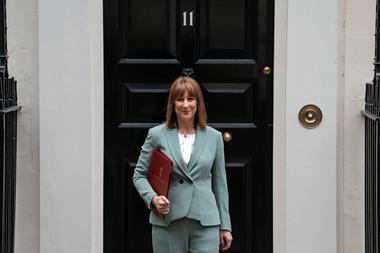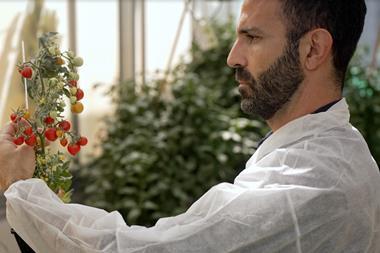At the end of May, the Stockholm Declaration on Chemistry for the Future was launched at the Nobel Symposium on Chemistry for Sustainability, organised and hosted by the Stockholm University Center for Circular and Sustainable Systems (SUCCeSS). The aim of the declaration is to highlight what is needed to transform scientific breakthroughs into positive impacts for society.
The five main themes centre on chemical products and processes, chemical hazards, chemistry education, the transparency of data and information, and government policies, calling for chemistry to be used to its full potential to achieve a more sustainable planet.
Described as the ‘architect’ of the declaration, green chemistry expert Paul Anastas spoke to Chemistry World about what led to its creation and what he hopes it will achieve.

How did the Stockholm Declaration on Chemistry for the Future initially come about?
When the Nobel Foundation and SUCCeSS invited us to organise a Nobel Symposium in Stockholm and gather all of the best people from around the world on green chemistry, we looked at the level of commitment that people have to take an entire week sequestered on an island in the Swedish archipelago – we said, ‘we’re going to do all this for just a symposium?!’.
And so we thought, how about we put together the Stockholm Declaration on Chemistry for the Future and outline the imperatives that are needed to transform all of this brilliant scientific invention, discovery and innovation that we’re talking about at the symposium, and talk about how to implement it so it makes a difference in people’s lives.
Who was involved?
Every one of the speakers was on the writing team. Obviously, the best of scientific research and innovation was represented, but it was also business and industry, the educational aspects across all different flavours of education, as well as policy and economics that needed to be included.
Why now?
It’s long overdue. When you look at what chemistry is capable of accomplishing today and comparing it with what is actually implemented, it is clear that there’s an immense gap between the power and potential of chemistry to do good for society and what is being accomplished at scale for people, prosperity and the planet.
Chemistry changed the world before, we just need to do it again.
How did you come up with the five elements?
It was very organic – it didn’t start out as five, it started as dozens. We broke up into different groups, did some writing and then there was the lifting of putting this together. You have all these brilliant people, with all of these brilliant ideas and opinions and perspectives and life experience saying ‘how are you going to transform this into something cohesive?’ It took the better part of a year to do it.
We invited people to participate in the symposium – these are some of the most accomplished, busiest people that I know – no one declined. The declaration was not designed to be a consensus document – if you don’t agree with it, don’t sign it. If you agree with it, sign it – but 100% of the people signed it.
How do you measure if those signatures lead to positive change?
The first step is signing something – it can be thought of as a throwaway, but it’s anything but. The signing by an individual or an institution is a statement of intention, of belief, even of identity.
‘I consider it’ is one of the strongest statements that you can make, that one can view it as being important enough to build it into all of their decision making. In many ways, the signing on to this declaration is saying ‘I view these imperatives as being important’. Step two, just about every sentence in there could be a programme, a symposium, a conference, a planning session, or inform policy change. There’s a big reason why the imperatives don’t tell you how to implement them, because the ‘how’ will be as different and as individual as the tapestry of the world, but the imperatives are the same of what we need to do.
How do you turn it into action? The same steps that we do in changing funding models, changing economic models, making our priorities different, the way we teach, the way that we structure curriculum.
What do you think are the biggest challenges to implementing these actions?
We have demonstrated that we can. Now what we’re focusing on is, will we? Do we have the will to make these changes? That conversion of focusing on the same old economic models that got us into this situation in the first place, clinging on to old ways and, quite frankly, sometimes old, flawed chemistry. The only thing that these people who have dedicated their lives to making new molecules, materials, transformations etc, all they really want is to see it make a positive impact. And the only way that we can value them, validate them, treat them as the modern-day heroes and creators of scientific miracles [that they are], is by implementing their work.
Is there anyone who hasn’t signed it yet that you would like to see sign it?
Ha! All 8 billion people. Seriously though, countless numbers of people have and are continuing to sign on; far more than I ever could have imagined. The German Chemical Society, the Indian Chemical Society, the Royal Society of Chemistry and the Canadian Chemical Society have already endorsed it, and I know for sure that several others are ready for high-profile announcements in the coming days. So, has anybody not signed it? I’d say not signed it yet.
What do you hope will be the impact of this declaration?
As a catalysing force to recognise that the old days are behind us. In the same way that chemistry transformed an old world into the modern world we now know, this is going to bring us a new definition of what the future can be. If we reflect on it just briefly, the petrochemical revolution enabled all the other revolutions in technology that happened in the 20th century. Virtually all of the things that we brag about and enjoy would not have been possible. The same thing can happen again when we’re talking about these dynamic, adaptable, obedient, resilient types of molecules and materials. It just explodes the mind on what they can wind-up meaning for everything – from robotics, to travel, to energy.
This interview was edited for brevity and clarity.

















No comments yet